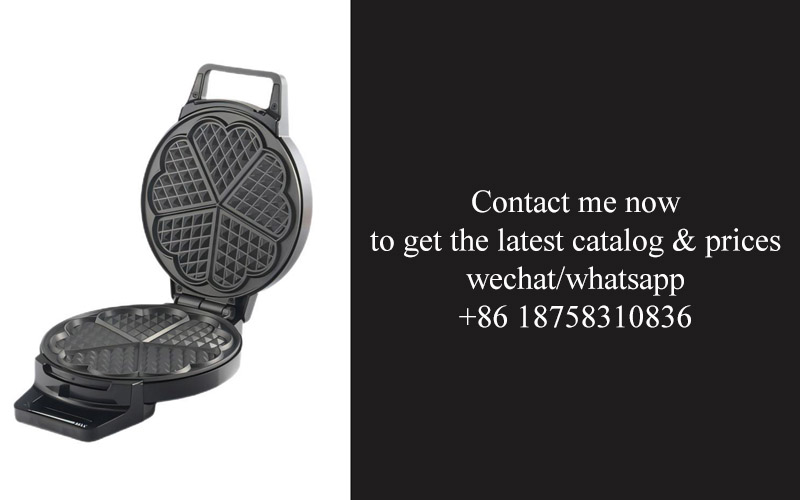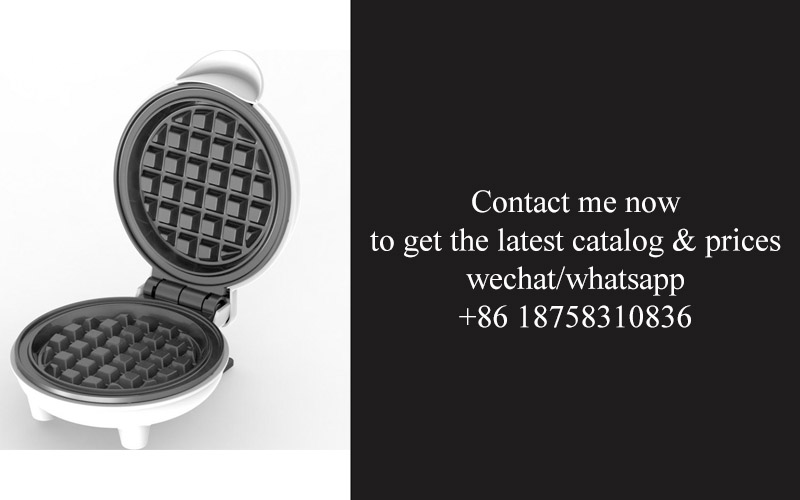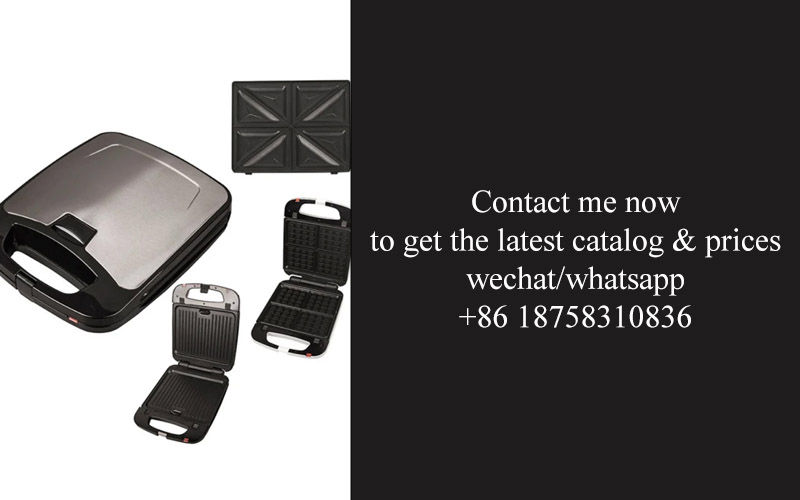Address
304 North Cardinal
St. Dorchester Center, MA 02124
Work Hours
Monday to Friday: 7AM - 7PM
Weekend: 10AM - 5PM
Address
304 North Cardinal
St. Dorchester Center, MA 02124
Work Hours
Monday to Friday: 7AM - 7PM
Weekend: 10AM - 5PM

As the heart of modern households, the kitchen has evolved beyond mere meal preparation to become a hub of innovation and health-conscious living. The appliances and cookware we use play a pivotal role in shaping our culinary experiences and overall well-being. In this era of rapid technological advancements, the demand for safe, efficient, and sustainable kitchen solutions has surged. This article delves into the significance of LFGB compliant non-stick coatings, their impact on the European and American markets, and the evolving consumer preferences that drive the future of cookware.
The European and American kitchen landscapes have been witnessing a remarkable transformation, with smart kitchen appliances becoming the new norm. This shift is not just a trend; it’s a testament to the ever-evolving demands of consumers who seek convenience, efficiency, and innovation in their daily cooking routines. Let’s delve into how this revolution is unfolding on both sides of the Atlantic.
In Europe, the emphasis on smart kitchen appliances is deeply rooted in the continent’s rich culinary heritage and its commitment to health and sustainability. From Germany to Italy, smart ovens, induction cooktops, and high-tech refrigerators are becoming increasingly popular. These appliances not only enhance the cooking experience but also offer a range of features that cater to the health-conscious consumer. For instance, many modern ovens come with programmable settings that allow for precise temperature control, ensuring that food is cooked to perfection without the need for constant monitoring.
Across the pond in the United States, the smart kitchen appliance market is booming, driven by a younger demographic that values technology and convenience. Smart kitchen gadgets, such as hands-free faucets and smart blenders, are becoming more common in American homes. The U.S. market is also seeing a surge in demand for energy-efficient appliances, which not only save money on utility bills but also contribute to a greener planet.
One of the key components that have been integral to the rise of smart kitchen appliances is the non-stick coating. This innovative technology has revolutionized the way we cook, making cleanup easier and reducing the risk of food sticking to pans and pots. However, not all non-stick coatings are created equal. Enter LFGB compliance, a set of stringent standards that ensure the safety and quality of cookware products.
LFGB, which stands for Lebensmittel- und Bedarfsgegenständegesetz, is a German law that sets out the requirements for food contact materials. These regulations are among the most rigorous in the world and are often seen as a gold standard for cookware safety. LFGB compliant non-stick coatings must undergo extensive testing to ensure they do not leach harmful chemicals into food, thus protecting consumers’ health.
In Europe, the demand for LFGB compliant non-stick coatings is high, as consumers are increasingly aware of the importance of safety in their kitchenware. This awareness is driven by a combination of government regulations and public education campaigns. As a result, European manufacturers are stepping up their game to meet these standards, offering a wide range of cookware options that are both safe and functional.
The American market, while not as strictly governed by LFGB, is also responding to the call for safer non-stick coatings. American consumers, much like their European counterparts, are becoming more health-conscious and are looking for cookware that not only performs well but also meets their safety expectations. This has led to a growing number of brands offering LFGB compliant non-stick coatings in the U.S., signaling a shift towards higher safety standards across the board.
The rise of smart kitchen appliances, coupled with the demand for LFGB compliant non-stick coatings, is also influencing the design and functionality of cookware. Manufacturers are now focusing on creating appliances that are not only smart but also durable and easy to use. For example, induction cooktops are becoming more common, as they are energy-efficient and provide precise heat control, making them ideal for non-stick cookware.
In the realm of non-stick coatings, innovation is key. New materials and technologies are being developed to enhance the longevity and safety of these coatings. One such innovation is the use of ceramic-based coatings, which are not only non-toxic but also provide a natural, non-stick surface that is gentle on food and easy to clean.
As the smart kitchen appliance market continues to grow, so too does the importance of LFGB compliant non-stick coatings. The European and American markets are leading the way in this trend, with consumers driving the demand for safer, more sustainable cooking solutions. The future of the kitchen is bright, with a focus on technology that not only makes cooking easier but also promotes health and well-being.

LFGB, or the German Food, Drug, and Cosmetic Act, stands as a stringent regulatory framework that has become a global benchmark for quality in the kitchen appliance industry. This comprehensive law, originally crafted in Germany, has influenced standards across Europe and beyond, ensuring that products meet the highest safety and health requirements. Understanding LFGB compliance is crucial for both manufacturers and consumers, as it guarantees that the non-stick coatings on cookware are not only effective but also safe for everyday use.
The LFGB covers a wide range of products, from kitchen utensils to food storage containers, but it is particularly relevant for cookware due to the direct contact with food. The act specifies that all materials used in the production of cookware must be free from harmful substances that could leach into food. This includes non-stick coatings, which are a staple in modern kitchens for their ease of use and convenience.
One of the key aspects of LFGB compliance is the testing and certification process. Manufacturers must undergo rigorous testing to prove that their non-stick coatings contain no heavy metals, such as lead or cadmium, and that they do not release harmful chemicals when heated. This is particularly important for non-stick coatings, as they are often heated to high temperatures during cooking.
The standards set by LFGB are not just about the absence of harmful substances; they also encompass the durability and performance of the non-stick coatings. Cookware must be able to withstand repeated use without losing its non-stick properties, ensuring that consumers can enjoy their cookware for years without worrying about the quality or safety of the product.
For consumers, LFGB compliance is a reassurance that the cookware they purchase has been tested and certified to meet strict safety standards. This is particularly comforting when considering the potential health risks associated with consuming food cooked in cookware with unsafe coatings. The presence of LFGB certification on a product’s label is a clear signal that the manufacturer has taken the necessary steps to ensure the product’s safety.
In the European Union, LFGB compliance is often seen as a minimum requirement for cookware products. However, many manufacturers go above and beyond these standards, choosing to adhere to even stricter guidelines to differentiate their products in a competitive market. This trend has led to an increase in the availability of high-quality, safe cookware that consumers can trust.
The American market, while not directly governed by LFGB, often mirrors these standards due to the global nature of the kitchen appliance industry. American consumers, too, are increasingly looking for cookware that not only performs well but also meets stringent safety standards. This has spurred the adoption of similar testing and certification processes by American manufacturers, ensuring that their products are comparable to those in Europe.
The importance of LFGB compliance extends beyond the immediate safety of the consumer. It also plays a role in the broader environmental and sustainability conversation. Cookware that is LFGB compliant is typically made from materials that are less harmful to the environment, contributing to a more sustainable approach to kitchenware production.
In conclusion, LFGB compliance is more than just a legal requirement; it is a symbol of quality and safety in the kitchen appliance industry. Whether in Europe or America, consumers can rest assured that cookware with LFGB certification has been thoroughly tested and meets the highest standards for safety and performance. As the demand for safe, high-quality cookware continues to grow, the LFGB standard remains a cornerstone of trust in the marketplace.

Non-stick coatings have revolutionized the way we cook, making our lives easier and our kitchens more efficient. These innovative coatings are not just a convenience; they are a game-changer in the cookware industry. Let’s delve into the world of non-stick coatings and understand why they are becoming a staple in modern kitchens.
The evolution of non-stick coatings began with the introduction of Teflon, a brand that has become synonymous with non-stick technology. Over the years, advancements in materials science have led to the development of various types of non-stick coatings, each with its unique properties and benefits.
One of the most popular non-stick coatings today is PTFE (Polytetrafluoroethylene), which is the same material used in Teflon. PTFE is known for its exceptional non-stick properties, making it ideal for cooking delicate foods without the need for excessive oil or butter. However, concerns about the potential release of harmful chemicals, such as PFOA (perfluorooctanoic acid), have led to the development of alternative coatings.
Ceramic coatings have emerged as a popular alternative to PTFE. These coatings are made from inorganic compounds and are free from PFOA and other harmful substances. They offer excellent non-stick performance and are also scratch-resistant, making them durable and long-lasting. The natural, non-toxic nature of ceramic coatings appeals to health-conscious consumers who want to minimize their exposure to potentially harmful chemicals.
Another innovative non-stick coating is the use of silicone. Silicone coatings are known for their heat resistance and flexibility, allowing them to withstand high temperatures without degrading. They are also non-reactive, which means they won’t interact with food or cooking oils, maintaining the integrity of flavors. This makes silicone an excellent choice for baking and other high-heat cooking methods.
The key to a successful non-stick coating lies in its ability to create a smooth, even surface that repels food particles and prevents sticking. This is achieved through a multi-layered process that involves applying a base layer, followed by a non-stick layer, and finally a topcoat for added durability. The quality of these layers can vary widely, affecting the overall performance and longevity of the coating.
When it comes to cookware, the non-stick coating is just one component that contributes to its overall quality. The material of the cookware itself plays a crucial role. Aluminum cookware, for example, is lightweight and conducts heat well, but it can be prone to warping and scratching. Stainless steel, on the other hand, is durable and can withstand high temperatures, but it can be more challenging to clean and may not distribute heat as evenly as aluminum.
The combination of a high-quality non-stick coating and a sturdy base material is what makes cookware truly exceptional. Brands like All-Clad and Calphalon have mastered this blend, offering cookware that is not only non-stick but also durable and versatile.
As consumers become more health-conscious and environmentally aware, the demand for non-stick coatings that are safe, sustainable, and effective has never been higher. Companies are responding by investing in research and development to create new, eco-friendly coatings that are as reliable as their predecessors.
One such innovation is the use of plant-based oils in non-stick coatings. These coatings are derived from renewable resources and are free from the harmful chemicals found in traditional non-stick coatings. While they may not offer the same level of non-stick performance as PTFE or ceramic coatings, they are a step in the right direction for those looking to reduce their environmental footprint.
Another area of innovation is the development of coatings that are more resistant to wear and tear. As cookware is used over time, the non-stick coating can wear down, leading to a decrease in performance. New coatings are being designed to last longer, providing a more sustainable option for consumers who want to avoid frequent replacements.
In conclusion, non-stick coatings have transformed the way we cook, offering convenience, health benefits, and environmental advantages. As technology continues to advance, we can expect to see even more innovative coatings that are not only non-stick but also sustainable and safe for our health and the planet.

The world of cookware has seen a remarkable transformation with the advent of innovative non-stick coatings. These advancements have not only simplified cooking processes but have also brought about a newfound awareness of health and safety. Among the many certifications that ensure product quality and safety, LFGB compliance stands out as a pivotal benchmark. Let’s delve into why LFGB-compliant non-stick coatings are not just a luxury but a necessity in modern cooking.
One of the primary reasons LFGB-compliant non-stick coatings are so crucial is the assurance they provide against harmful substances. The German Food, Drug, and Cosmetics Act (LFGB) sets stringent standards for the presence of substances like PFOA, PTFE, and heavy metals, which can be harmful when they leach into food. Products that carry the LFGB mark have been rigorously tested and found to be safe for consumption, giving peace of mind to both consumers and chefs alike.
These coatings have revolutionized the cooking experience by eliminating the need for excessive amounts of oil. In the past, cooks had to use copious amounts of fat to prevent food from sticking to pots and pans, which not only added unwanted calories but also increased the risk of heart disease. LFGB-compliant non-stick coatings, however, allow for healthier cooking, as they require a fraction of the oil, making meals lower in fat and more nutritious.
The non-stick properties are not just a convenience but also a significant time-saver. No one enjoys scraping burnt food from the bottom of a pan or scrubbing pots for what feels like an eternity. LFGB-compliant coatings ensure that cleaning is a breeze, as they are not only non-stick but also durable. This longevity reduces waste and encourages the use of fewer new items, promoting sustainability.
Another important aspect of LFGB-compliant non-stick coatings is their impact on cooking techniques. With traditional cookware, certain methods like sautéing or browning require a higher temperature to achieve the desired outcome. However, non-stick pans can withstand these temperatures without damage, allowing for a wider variety of cooking methods that enhance the flavor of dishes. Chefs and home cooks can now explore a myriad of recipes without being limited by the type of cookware.
Moreover, these coatings are designed to be scratch-resistant, which is a testament to the high-quality materials used. This means that the non-stick surface will maintain its performance over time, ensuring that your pots and pans are as useful in five years as they are today. This longevity is a clear advantage over cookware that may need frequent replacement or professional re-coating.
Environmental concerns have also been addressed with LFGB-compliant non-stick coatings. The materials used in these coatings are not only safe for human health but also for the planet. They are designed to be less harmful to the environment, from the production process to the end of their lifespan. This commitment to environmental stewardship resonates with eco-conscious consumers who are increasingly looking for sustainable cooking solutions.
Consumer confidence is another crucial factor that LFGB compliance plays a part in. When consumers see the LFGB mark on a product, they are more likely to trust its quality and safety. This trust is essential, especially considering the wide range of cookware available on the market, some of which may not adhere to the same rigorous safety standards.
In addition to personal health benefits, LFGB-compliant non-stick coatings can also contribute to economic health. By ensuring that products meet high safety standards, they may reduce healthcare costs associated with the ingestion of harmful substances. Furthermore, they may also open up new markets, particularly in countries where food safety regulations are strict.
In the world of cookware, the presence of LFGB-compliant non-stick coatings signifies a commitment to excellence. They are a game-changer because they address multiple concerns: health, convenience, sustainability, and economic impact. As consumers continue to seek healthier, more sustainable, and convenient cooking options, the demand for LFGB-compliant non-stick coatings is likely to grow, making them an integral part of the future of cooking.

In Europe, the kitchen is often seen as a hub of culinary tradition, where the art of cooking is deeply rooted in history and heritage. American kitchens, on the other hand, are more about innovation and convenience. Despite these differences, both markets share a common quest for cooktops that not only perform well but also prioritize health and safety. This tale of two cooktops reveals the unique preferences and trends in each region.
European kitchens are characterized by their appreciation for high-quality materials and timeless design. The cooktops in these spaces are often induction models, favored for their efficiency and precise temperature control. Induction cooktops have gained popularity in Europe due to their energy-saving properties and the ability to quickly heat pots and pans, which is essential in a region known for its diverse and hearty dishes.
In contrast, American kitchens tend to be more diverse in terms of cooktop preferences. While induction cooktops are gaining traction, particularly among eco-conscious consumers, traditional gas cooktops still dominate the market. The American love for large, open kitchens and the need for high-heat cooking for grilling and searing are reasons why gas remains a favorite. Additionally, American consumers often seek cooktops that offer a range of heat settings, from simmer to sear, to cater to their varied cooking habits.
In Europe, the emphasis on safety and health is paramount, which is why LFGB compliant non-stick coatings are becoming a standard feature in cookware. The LFGB (Liegenschaftsfähiges Gebrauchsgerät) is a set of regulations that ensure the safety of consumer products in Germany and the European Union. Non-stick coatings that meet LFGB standards are free from harmful chemicals like PFOA and PTFE, making them a preferred choice for health-conscious consumers.
American consumers, while also valuing health, are more concerned with the ease of cleaning and the durability of cooktops. Non-stick coatings play a significant role in this aspect, as they allow for effortless food release and easy cleaning. However, the American market is less stringent about the specific certifications like LFGB, as long as the products are deemed safe and effective.
The design of cooktops in Europe and America also reflects the cultural nuances of each region. In Europe, cooktops are often sleek and minimalist, with a focus on functionality and aesthetics. Glass-ceramic surfaces are popular for their clean look and ease of maintenance. In the United States, cooktops come in a variety of designs, from classic to modern, and are often customized to fit the style of the kitchen.
The European market is also seeing a rise in smart cooktops, which are equipped with features like temperature control and smart connectivity. These cooktops can be controlled via smartphone apps, allowing users to monitor and adjust cooking times and temperatures remotely. American consumers are beginning to embrace these smart features, particularly as they become more affordable and accessible.
Another interesting trend in both markets is the growing interest in induction cooktops. While induction is more prevalent in Europe, American consumers are increasingly recognizing the benefits of this technology, such as faster cooking times and lower energy consumption. The integration of induction into high-end gas ranges is also a sign of its growing acceptance in the American market.
In conclusion, the European and American markets present a fascinating contrast when it comes to cooktop preferences. Europe’s focus on health, safety, and efficiency is evident in the popularity of LFGB compliant non-stick coatings and induction cooktops. America’s diverse market, with its blend of traditional and modern preferences, continues to evolve, driven by innovation and consumer demand for convenience and performance. Whether in a European kitchen or an American household, the cooktop remains a crucial element in the culinary experience, reflecting the unique stories and tastes of each region.

In today’s kitchen landscape, consumer preferences have shifted dramatically, with a growing emphasis on safety, health, and sustainability. Safe cookware has become not just a necessity but a hallmark of quality. Let’s delve into the factors driving this demand and why it’s becoming a cornerstone of the cookware industry.
Health consciousness is on the rise, and with it, a preference for non-toxic cookware. Consumers are increasingly wary of chemicals like PFOA and PTFE, which were once commonly used in non-stick coatings but have been linked to health concerns. This shift has spurred the development of safer alternatives, leading to a surge in demand for cookware with LFGB compliant non-stick coatings.
Environmental concerns are also playing a significant role in shaping consumer preferences. As people become more aware of the impact of their purchasing decisions on the planet, they’re gravitating towards products that are sustainable and eco-friendly. Cookware made from recycled materials or those that are designed for longevity and durability are becoming more popular.
Moreover, there’s a growing awareness of the importance of food quality and the potential risks associated with cooking methods. Non-stick coatings that allow for healthier cooking techniques, such as low-fat or air-frying, are increasingly appealing. Consumers are looking for cookware that not only makes cooking easier but also promotes healthier eating habits.
Safety features are another crucial aspect of cookware that consumers are now considering. The ease of cleaning, the prevention of food sticking, and the reduction of smoke and splatters are all factors that contribute to a safer cooking experience. This has led to a demand for cookware with innovative designs and materials that minimize the risk of burns and accidents in the kitchen.
The convenience factor cannot be overlooked. Modern lifestyles are fast-paced, and time is a precious commodity. Cookware that reduces cooking time and effort is highly sought after. Non-stick coatings that eliminate the need for excessive oil or butter, and cookware that is easy to clean, are seen as time-saving solutions.
Moreover, the demand for safe cookware is being driven by demographics. Younger generations, who are more likely to be health-conscious and environmentally aware, are entering the market as consumers. They bring with them a set of values and expectations that prioritize safety and sustainability.
In response to these preferences, manufacturers are stepping up their game. They are investing in research and development to create cookware that meets the stringent standards for safety and health. The introduction of new materials and technologies, such as ceramic non-stick coatings, is a testament to this commitment.
Additionally, the rise of social media and online reviews has given consumers a platform to share their experiences and preferences. This has democratized the market, allowing for a more transparent and customer-centric approach to cookware development. Brands that prioritize safety and health in their products are gaining a competitive edge.
In conclusion, the demand for safe cookware is a multifaceted trend that reflects broader societal changes. It’s driven by health concerns, environmental awareness, convenience, and demographic shifts. As consumers continue to seek out cookware that aligns with their values, the industry is responding with innovative solutions that not only meet but exceed these expectations.

Cookware has always been a cornerstone of culinary culture, evolving alongside the needs and tastes of consumers. Today, as the world becomes more conscious of sustainability and health, the future of cookware is being shaped by a dual focus on environmental responsibility and personal wellness.
Materials that were once commonplace are now being scrutinized for their impact on health and the planet. Non-toxic alternatives are becoming increasingly popular, as consumers seek cookware that not only performs well but also aligns with their values. Aluminum, once a staple in cookware due to its affordability and heat conductivity, is being replaced by stainless steel and other non-reactive metals that prevent harmful substances from leaching into food.
Energy efficiency is another key factor. Induction cooktops have gained traction for their ability to heat pots and pans directly, eliminating the need for excess energy. This not only reduces electricity bills but also minimizes the environmental footprint. Smart cookware that adjusts to the type of food being prepared and the desired cooking time is also emerging, offering a more efficient and user-friendly cooking experience.
In the realm of health, the rise of allergies and the desire for organic and natural foods have prompted the development of cookware that is free from PFOA, PTFE, and other potentially harmful chemicals. Brands are investing in research to create coatings that are non-stick without relying on substances like perfluorinated compounds, which have been linked to various health issues.
Cookware is also becoming a part of the smart home ecosystem. Sensors that monitor temperature and cooking time are being integrated into cookware, providing real-time data and assistance to the user. This level of technology is not just about convenience; it’s about empowering consumers with the knowledge to cook safer and healthier meals.
The packaging of cookware is also undergoing a transformation. Eco-friendly materials and minimalism are becoming the norm, reflecting a shift towards sustainability in the packaging industry. Biodegradable or recyclable materials are being used to reduce the environmental impact, while also ensuring that the product is presented in an aesthetically pleasing yet responsible manner.
As we look to the future, the design of cookware is also evolving. Sleek, modern designs are replacing the traditional, bulky cookware of yesteryears. This not only enhances the aesthetic appeal of kitchen countertops but also encourages the use of cookware that is easier to clean and maintain.
Another significant trend is the customization of cookware. Consumers are no longer satisfied with one-size-fits-all products. Customizable cookware that allows users to choose the size, shape, and type of handle, as well as the material, is gaining popularity. This not only caters to individual preferences but also extends the longevity of the cookware as it is tailored to the specific needs of the user.
Cookware is also being developed with the global palate in mind. The world is more connected than ever, and culinary trends are crossing borders. Cookware that is designed to handle a variety of cooking techniques, from stir-frying to baking, is becoming standard. This versatility allows cooks to explore diverse recipes without the need for multiple pieces of cookware.
Health-conscious consumers are also driving the demand for cookware that can be used on a variety of heat sources, including induction, gas, and electric cooktops. This means that a single piece of cookware can be used across different settings, reducing waste and the need for additional kitchen equipment.
Lastly, the importance of cookware in cultural identity cannot be overlooked. As people become more interested in their heritage and the origins of their cuisine, cookware that reflects traditional cooking methods and materials is making a comeback. This not only preserves cultural practices but also adds an element of tradition to modern cooking experiences.
In conclusion, the future of cookware is marked by a profound emphasis on sustainability and health. As the world becomes more aware of the interconnectedness of our actions, the cookware industry is responding with innovations that cater to both the planet and the well-being of its users. From non-toxic materials to smart technology and eco-friendly designs, the future of cookware is bright, healthy, and forward-thinking.

In the realm of cookware, certain brands have emerged as pioneers, embracing LFGB compliant non-stick technology to lead the charge in kitchen innovation. These companies are not just manufacturing products; they are crafting a future where health, safety, and environmental responsibility go hand in hand. Let’s delve into a few case studies that highlight their commitment to excellence.
One such brand is GreenGlide, known for its eco-friendly approach to cookware. Their non-stick coatings are not only LFGB compliant but also free from harmful chemicals like PFOA and PTFE. GreenGlide’s commitment to sustainability is evident in their use of recycled materials and energy-efficient manufacturing processes. Customers appreciate the brand’s dedication to reducing their carbon footprint while providing a reliable and durable cooking surface.
Another standout is CookSmart, a company that has made a name for itself by integrating smart technology into their non-stick cookware. Their products not only meet LFGB standards but also come with features like temperature control and smart sensors that help prevent sticking and ensure even cooking. CookSmart’s approach to non-stick technology is not just about the coating; it’s about creating a more intuitive and efficient cooking experience.
The Swiss brand SwissChef has long been associated with quality and precision. Their LFGB compliant non-stick cookware is a testament to their rigorous quality control. SwissChef’s non-stick coatings are designed to last, with a unique formula that resists wear and tear. The brand’s attention to detail is seen in their cookware’s ergonomic handles and sleek designs, making them a favorite among professional chefs and home cooks alike.
Gourmet non-stick cookware from Chef’s Choice boasts a unique blend of aesthetics and performance. Their LFGB compliant coatings are not only safe for health but also non-porous, which means they are easy to clean and maintain. Chef’s Choice has also incorporated innovative features like induction compatibility, catering to the growing demand for versatile cookware. Their cookware is a blend of form and function, appealing to those who appreciate both the look and the longevity of their kitchenware.
In the world of high-end cookware, Allure Cookware stands out with its luxurious LFGB compliant non-stick coatings. These coatings are not just about performance; they are also about durability and ease of maintenance. Allure’s cookware is designed for those who value the look and feel of their kitchenware, with a focus on creating a premium experience. The brand’s commitment to quality is reflected in every aspect of their product line.
One cannot talk about LFGB compliant non-stick technology without mentioning Tefal, a name synonymous with non-stick cookware. Tefal’s non-stick coatings are renowned for their longevity and safety. The brand has been at the forefront of non-stick innovation, continuously improving their formulas to meet the highest standards of health and safety. Tefal’s cookware is a staple in many kitchens, and their dedication to excellence is evident in their extensive range of products.
These case studies illustrate how brands are leading the way with LFGB compliant non-stick technology. They are not just adhering to regulations; they are setting new benchmarks for quality, sustainability, and health. As consumers become more aware of the impact their choices have on the environment and their health, these brands are at the forefront, offering solutions that are both safe and responsible. The future of cookware is here, and it’s being shaped by companies that understand the importance of innovation and integrity.

In a world where health and safety are paramount, the kitchen has become a battleground for innovation. Brands are not just competing on design and functionality but are also vying for the trust of consumers by adhering to stringent quality standards. The LFGB (German Food, Drug, and Cosmetic Products Act) compliant non-stick technology is one such innovation that stands out in the crowded cookware market. Let’s look at some brands that are leading the way with this technology.
One brand that has made a significant impact is GreenPan. Known for its commitment to sustainability and health, GreenPan has been at the forefront of LFGB compliant non-stick coatings. Their pans are free from harmful chemicals like PFOA and PFAS, making them a favorite among eco-conscious consumers. The brand’s dedication to reducing carbon footprints is evident in their use of recycled materials and commitment to ethical sourcing.
Another standout is Tefal, a name synonymous with non-stick cookware. Tefal’s non-stick coatings meet LFGB standards, ensuring that their products are not only easy to clean but also safe for everyday use. The brand’s innovation doesn’t stop there; they have developed a unique ceramic coating that is durable, scratch-resistant, and heat-resistant, making their cookware a long-lasting investment.
Cooksmark is a brand that has gained popularity for its high-quality non-stick cookware that adheres to LFGB regulations. Their products are not only free from harmful substances but also designed to be energy-efficient. Cooksmark’s cookware is a testament to the brand’s focus on creating a healthier cooking environment without compromising on performance.
Cuisinart, a well-known name in kitchen appliances, has also embraced LFGB compliant non-stick technology. Their cookware line offers a range of options that cater to different cooking styles and preferences. The brand’s commitment to safety is clear, as their non-stick coatings are designed to be durable and free from toxic chemicals, providing peace of mind to health-conscious consumers.
Kami, a newer entrant in the market, has quickly made a name for itself with its innovative non-stick cookware. The brand’s products are not only LFGB compliant but also come with a lifetime guarantee, reflecting their confidence in the quality and longevity of their cookware. Kami’s use of sustainable materials and commitment to reducing plastic waste has resonated with environmentally conscious consumers.
In the realm of professional-grade cookware, Demeyere has set a high standard with its LFGB compliant non-stick coatings. Their cookware is favored by chefs and home cooks alike for its superior performance and durability. Demeyere’s non-stick pans are designed to withstand high temperatures without releasing harmful substances, making them a safe choice for professional kitchens.
The success of these brands in the LFGB compliant non-stick cookware market is a testament to the growing demand for safe and sustainable cooking solutions. Consumers are increasingly aware of the health risks associated with certain cookware materials and are actively seeking out alternatives that prioritize their well-being.
As the market continues to evolve, it’s clear that brands that prioritize innovation, quality, and consumer safety will be the ones that lead the pack. The commitment to LFGB compliance is not just a regulatory requirement; it’s a promise to the consumer that their cookware is safe, reliable, and free from harmful substances.
In conclusion, the brands leading the way with LFGB compliant non-stick technology are not just meeting a legal standard; they are setting a new benchmark for the industry. By focusing on sustainability and health, these brands are not only providing consumers with a safer cooking experience but also contributing to a more sustainable future. As the demand for safe cookware grows, these innovators are poised to shape the future of the cookware market, ensuring that every kitchen can be a safe and healthy space.